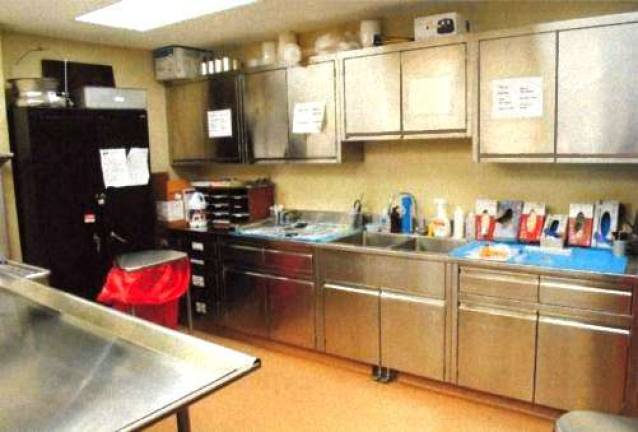Examining death in Orange County

GOSHEN — Of the state's 62 counties, Orange County is one of only 11 counties with a dedicated medical examiner to investigate suspicious deaths.
The medical examiners’s office will be moving next month from the Town of Wallkill to a new location near the county jail on Wells Farm Road in Goshen. Plans to move the office developed as the number of suspicious deaths continues to pile up.
Over the past five years, Chief Medical Examiner Charles Catanese and Deputy Medical Examiner Jennifer L. Roman have performed one post-mortem investigation per day, on average, in the morgue inside Orange Regional Medical Center in Wallkill.
From 2008 to 2012, the office has received an average of 685 referrals per year, according to reports. Roughly half of those cases result in a full autopsy.
In his role as medical examiner, Catanese operates both as someone gathering evidence to answer a legal question and as a scientific investigator solving a clinical problem.
At a meeting of the legislature’s Health and Mental Health Committee in March, Catanese recalled some of the cases that showed how the examination of bodies can translate to meaningful information about the hows and the whys of an unexplained loss.
Sometimes, however, no conclusion is reached.
Of the cases the office investigated last year, roughly half were deemed "natural," about one-third accidental, and less than 10 percent suicides. Homicides and other "undetermined" causes were the least prevalent.
Here's a sampling:
WARNING: Cases are graphic in nature
After an elderly man died on the operating table, his surgeon said the man had tumors throughout his body. Catanese performed an autopsy at the family’s request and found that the doctor’s description was not only false, but that a surgical accident killed the patient.
Police came upon a homeless man lying unresponsive in the woods. He died in the emergency room. The hospital staff found no trauma, but the autopsy found bruising to the head and face, and bleeding on the surface of the brain. The police investigation revealed someone physically harmed the man the day before. The case was ruled a homicide.
A six-month-old infant with history of ear infections was seen by a physician and prescribed antibiotics. At home a few days later, the infant appeared fatigued, so he was placed in a swing chair. He later stopped breathing. The baby was taken to the hospital and died. Screens for toxic substances revealed extremely high levels of the drug dextromethorphan. The death was ruled a homicide.
A 52-year-old man was discovered dead by his roommates, who reported that he had history of heart disease. An investigation by the medical investigator revealed there was a half-empty bottle of anti-freeze near his bed. A screening for toxic substances revealed the death was due to ethylene glycol poisoning, and the death was ruled a suicide.
An 82-year-old woman with many medical problems, including heart disease, died in a nursing home. Her family said she reported abuse by nursing home staff one month before. An autopsy revealed multiple bruises. The law enforcement investigation did not find a cause for her injuries. The examiner could not determine if the injuries were due to an assault or a fall, and the cause of death remained undetermined.